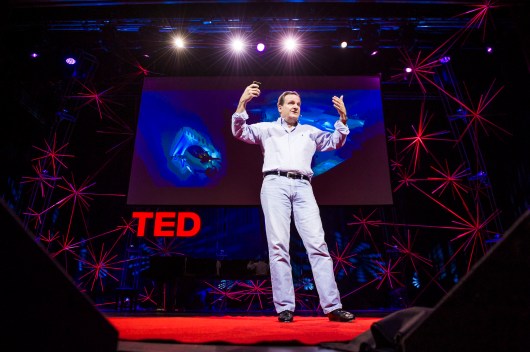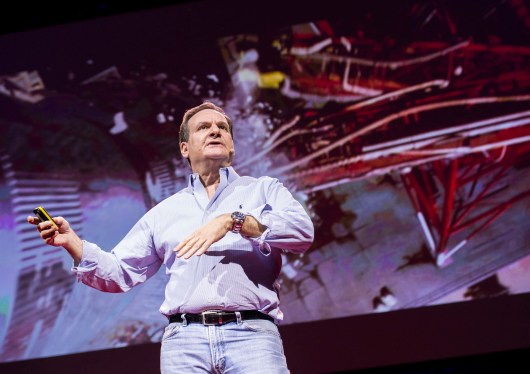Robert Legato’s life is about perception. He is a two-time Oscar winner for his visual effects magic, and in this spectacularly visual talk he dissects some of his most famous effects, showing how they use the brain’s processes to create the effect of reality.
Apollo 13
Working on this, he discovered something about how our brains work: “When we’re infused with enthusiasm or awe, it changes perceptions of the things that we see and what we remember.”
To re-create the launch of this historic craft, he assembled some stock footage of rocket launches and asked people to tell him what was most memorable about the film. Interestingly, people described different shots very differently from what was in the shot, like camera moves and cuts that never happened. They saw different things than he did. So he decided to re-create what they remembered, not what they saw.
He was fascinated by the fact that people could respond so emotionally to shots done in a parking lot. One of the most emotional parts of the movie was created by simply dropping a model from a plane. He filmed it himself, and he’s a bad cameraman, so it looked a bit like a documentary.
He showed the special-effects footage to an astronaut, who immediately said, “That’s wrong.” Legato was puzzled, so he showed him more footage, and the astronaut said, “That’s wrong too.” But the second shot was from his own mission, from outside the rocket he’d been inside. He had found it wrong only because he knew they were making it up.
Another astronaut, this time Buzz Aldrin, had an exchange with Ron Howard. He came up after seeing Apollo 13 and said, “I saw some shots I’d never seen before. What vault did you find that in?”
Titanic
What everyone knows about the Titanic (aside from things end badly) is that Bob Ballard discovered it, and James Cameron went down and got more footage. Everyone watching knew that the Titanic was real and the footage was real, so they immediately suspended disbelief.
Legato’s task was to produce footage that looked like what Cameron was doing — and more important, that felt the same. Once he know the ship had been found, he wanted to see it. So he needed to create an effect where the audience wanted the same thing he did. That led to one of the most famous Titanic effects shots, where the camera swings around from a sailing Titanic to the wreckage at the bottom of the sea. He created that shot by tracking what he was looking at as he went around the ship and paying attention to where he was looking. Then, he slowly changed things on the periphery until the brain cued the change.
Hugo
The film itself, directed by Martin Scorcese, is based on the trickery of movies — that persistence of memory is what creates moving pictures themselves.
Sasha Baron Cohen wanted to be caught and pulled along by a moving train, but there was no way to get the train moving fast enough to be funny. So Legato re-created an illusion from the early days of movies based on a simple principle: If you move the camera by a moving object, it looks like the the moving object is staying still and the still object is moving. So he built a moving floor; the train and Sasha Baron Cohen are standing still.
The final example Legato shows is a beautiful Steadicam shot — except it isn’t. As an homage to Goodfellas, one of Scorcese’s previous films, Hugo‘s crew wanted to make a single shot moving throughout a train station that created the feeling that Hugo owned the station. It was stitched together to feel like a single shot, but what you’re seeing is actually five sets, two different boys, shot over six or seven months. It was, Legato said, “the best reviewed shot of his career.” When he asked a friend why that was, the friend replied, “Because no one knew you had anything to do with it.”
Photos: James Duncan Davidson


Comments